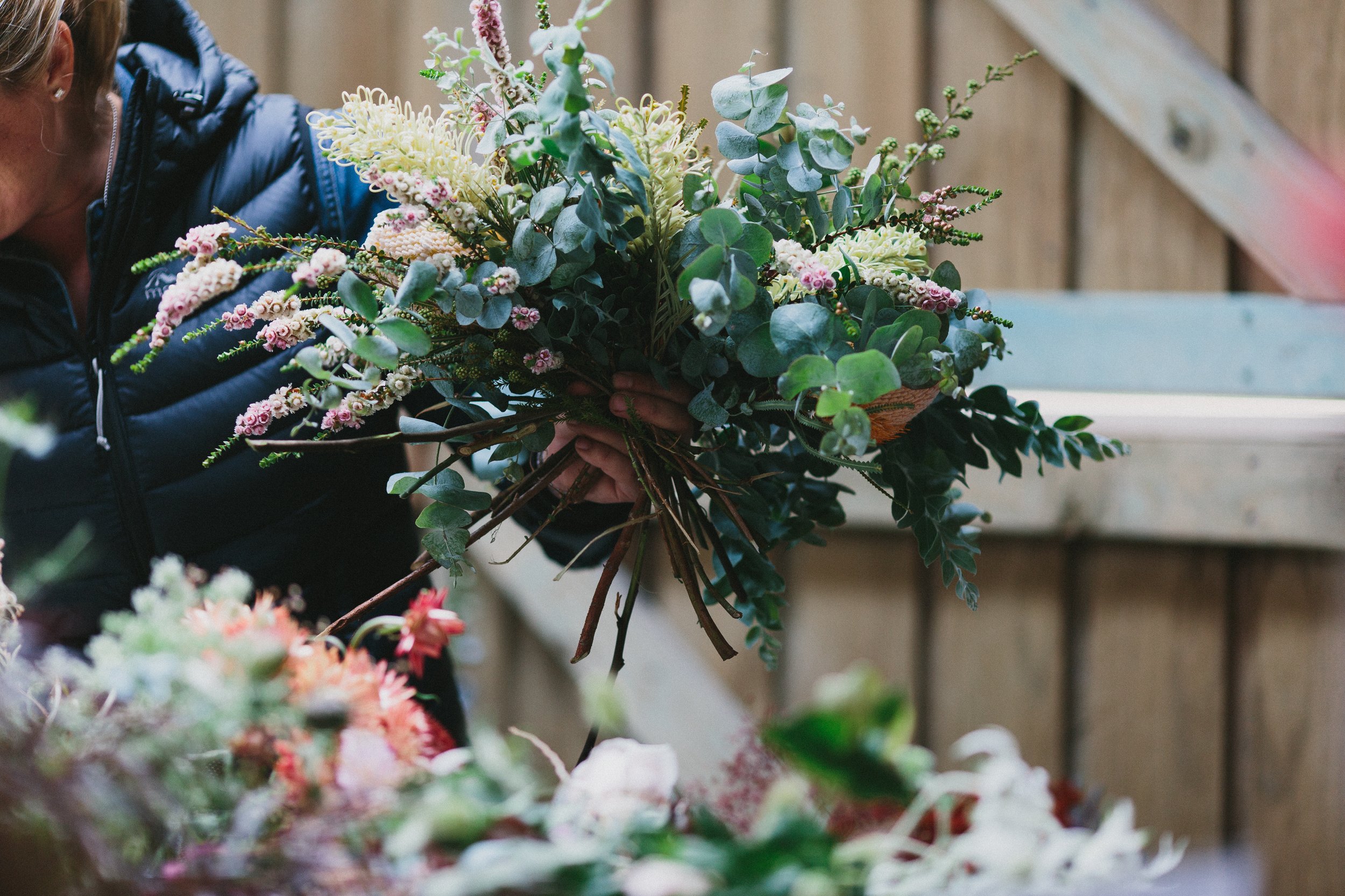
Frequently asked questions
-
The term “wildflowers” in its broadest sense, refers to flowers and foliage native to Australia and South Africa, sometimes also called ‘hard flowers’. A more narrow definition is flowers and foliage harvested from species endemic to Australia.
Australian wildflower species grown commercially include flannel flowers, Christmas bells and gum blossom, riceflower, Thryptomene, waxflower and Scholtzia, kangaroo paws, grevilleas, banksias and the related waratahs, and the gigantic Gymea lily (also valued for its versatile leaves).
South African species grown in Australia include a wide selection of Protea species, many types of Leucospermum (commonly known as pin cushions), Leucadendrons and the dainty Serruria (or blushing bride).
In addition, a very wide range of foliage is sourced from Australian and South African species, to complement the flowers in arrangements.
The industry is strongly aligned with ‘fashion’ and ‘lifestyle’ - demand can change quickly. Our industry has a good reputation for innovative products and improved varieties, and there are many as yet unexploited opportunities to develop even more new and exciting products.
Compared to most other flowers, native Australian and South African plants are ‘newly domesticated’ species - there is still a great deal to learn about their breeding, propagation and production systems. Many are woody species which do not attain marketable yields for some three to five years. This is a long lead time, compared to many traditional flower species, like roses, gerberas and bulb crops like lilies.
If handled with care and given the right post harvest treatments by growers, marketers, florists and end consumers, fresh cut wildflowers have a comparatively long vase life compared to many traditional flowers. Many will dry well.
-
Correct handling will ensure the longest possible vase life. Place your arrangement away from direct sun, heaters and draughts. Note: Many wildflowers have woody stems which drink a lot of water – make sure you keep the water in the vase or container topped up.
Every 2 days:
If the arrangement is in a vase or container – take the flowers out of the container and thoroughly clean the container.
Recut the stems – removing the bottom 2 cm with sharp secateurs.
Refill the container with fresh clean water and replace your flowers and foliage. Discard any wilting or shrivelled stems. Remove any foliage that will be below the water line.
Try not to buy flowers in floral foam in the first place as it is not good for the environment.
WildFlowers Australia generally supports the principles used in Sustainable Floristry and advises that you do too!